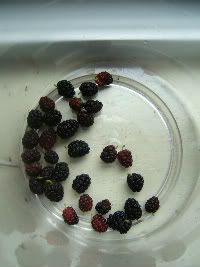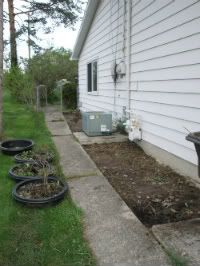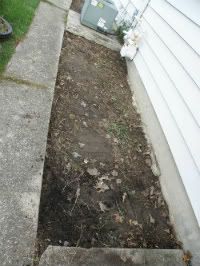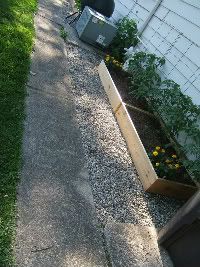Embarking on the journey of creating a thriving vegetable garden is a rewarding endeavor that promises a bounty of fresh produce and a deeper connection to the natural world. However, success in gardening requires careful planning, diligent care, and a willingness to learn and adapt along the way. In this comprehensive guide, we will delve into the intricacies of planning, planting, and maintaining a flourishing vegetable garden, offering valuable insights and practical tips to help you maximize yields and cultivate a bountiful harvest.
1. Planning Your Garden
Choose the Right Location:
Select a sunny spot for your vegetable garden, ideally receiving 6-8 hours of sunlight per day. Ensure the area has good drainage and is easily accessible for watering, weeding, and harvesting. Consider the micro-climates of your yard, noting areas that receive ample sunlight and areas that may be shaded by trees or buildings. Ensure that your chosen location is easily accessible for daily maintenance tasks such as watering, weeding, and harvesting.
Design Your Layout:
Consider the size and shape of your garden beds, pathways, and spacing between crops. Companion planting and crop rotation can help optimize space and promote healthier plant growth. Sketch out a garden plan, taking into account factors such as the size and shape of your garden beds, the placement of pathways for easy access, and the spacing between crops. Consider incorporating raised beds or container gardening for improved soil drainage and better control over soil quality.
Selecting Crops:
Choose vegetable varieties that are well-suited to your climate, soil type, and growing conditions. Consider factors such as maturity dates, space requirements, and desired harvest yields when planning your crop selection. Consult local gardening resources or extension services for recommendations on suitable crops for your region. Consider factors such as the length of the growing season, frost dates, and any specific pests or diseases prevalent in your area when choosing your crops.
2. Soil Preparation
Test Your Soil:
Conduct a soil test to assess nutrient levels, pH, and texture. Amend the soil as needed with organic matter such as compost, aged manure, or mulch to improve fertility and structure. Obtain a soil test kit from your local cooperative extension or garden center to assess the pH level, nutrient content, and texture of your soil. Follow the instructions provided with the kit to collect soil samples from various areas of your garden. Once you receive the results, amend the soil as necessary to correct any deficiencies or imbalances, such as adding lime to raise pH or incorporating organic matter to improve soil structure.
Prepare the Beds:
Clear the area of weeds, rocks, and debris, and loosen the soil to a depth of 6-8 inches using a garden fork or tiller. Create raised beds or mounded rows for improved drainage and soil aeration.
Mulching:
Apply a layer of organic mulch such as straw, leaves, or grass clippings to conserve moisture, suppress weeds, and regulate soil temperature. Mulching also helps to reduce soil erosion and compaction, improve soil fertility, and provide habitat for beneficial soil organisms.
3. Planting Your Garden
Timing:
Consult a local planting calendar or extension service for recommended planting dates based on your region and climate zone. Start seeds indoors or direct sow into the garden according to the specific requirements of each crop. Keep in mind the specific requirements of each vegetable variety, such as cool-season versus warm-season crops, and stagger plantings accordingly for a continuous harvest throughout the growing season.
Spacing and Depth:
Follow spacing recommendations provided on seed packets or plant labels to ensure adequate room for plant growth and airflow. Plant seeds at the appropriate depth according to the specific requirements of each crop, taking into account factors such as seed size and germination requirements. Use a ruler or planting guide to achieve uniform spacing and depth for optimal plant growth and productivity.
Watering:
Keep the soil consistently moist but not waterlogged, especially during the germination and early growth stages. Water deeply and infrequently to encourage deep root development and drought tolerance. Establish a regular watering schedule to ensure consistent soil moisture for healthy plant growth. Water newly planted seeds or transplants gently but thoroughly to promote good root establishment. Use a soaker hose, drip irrigation system, or watering wand to deliver water directly to the base of plants, minimizing water loss due to evaporation and runoff. Water early in the morning or late in the afternoon to reduce stress on plants and minimize water loss through evaporation during the hottest part of the day.
4. Caring for Your Garden
Weed Control:
Stay vigilant about weed management throughout the growing season to prevent competition for water, nutrients, and sunlight. Use a hoe, hand cultivator, or garden fork to remove weeds when they are small and easy to pull. Consider applying a layer of mulch to suppress weed growth and conserve soil moisture, making it easier to maintain a weed-free garden.
Pest Management:
Monitor your garden regularly for signs of pests and diseases, such as holes in leaves, chewed foliage, or wilting plants. Practice integrated pest management (IPM) techniques, such as handpicking pests, using row covers or netting to exclude pests, and encouraging natural predators such as ladybugs and beneficial insects. Consider rotating crops annually to disrupt pest life cycles and minimize the buildup of soil-borne diseases.
Fertilizing:
Feed your plants with organic fertilizers or compost to provide essential nutrients for healthy growth and development. Apply fertilizers according to the specific needs of each crop, taking into account factors such as soil fertility, plant growth stage, and nutrient deficiencies identified through soil testing. Avoid over-fertilizing, which can lead to nutrient imbalances, excessive vegetative growth, and environmental pollution.
5. Maximizing Yields
Succession Planting:
Plan successive plantings of quick-maturing crops throughout the growing season to ensure a continuous harvest and maximize yields. As one crop is harvested, replant the same area with a new crop to make the most of available growing space and extend the harvest season. Consider planting cool-season and warm-season crops in rotation to optimize space and maximize productivity.
Harvesting:
Harvest vegetables at peak ripeness for the best flavor, texture, and nutritional content. Check plants regularly for ripe produce and harvest promptly to prevent over-ripening or spoilage. Use sharp pruners or scissors to cut fruits and vegetables from the plant, taking care to avoid damaging stems or foliage. Harvest early in the morning when temperatures are cooler to minimize stress on plants and maximize flavor and nutritional value.
Preservation:
Extend the shelf life of your harvest by preserving excess produce through methods such as canning, freezing, drying, or fermenting. Invest in basic food preservation equipment such as canning jars, a pressure canner, or a dehydrator to process and store fruits and vegetables safely for long-term storage. Experiment with different preservation techniques and recipes to make the most of your garden bounty and enjoy homegrown produce year-round.
Conclusion
By following these comprehensive guidelines for planning, planting, and maintaining your vegetable garden, you can cultivate a thriving and productive garden that provides a bountiful harvest of fresh, nutritious produce throughout the growing season. Remember to stay observant, adaptable, and patient as you nurture your garden, and don’t hesitate to seek advice or assistance from experienced gardeners or gardening resources in your community. With dedication, perseverance, and a little bit of luck, you can enjoy the satisfaction of growing your own food and reaping the rewards of your efforts for seasons to come. Happy gardening!















































